Chess Pieces: A Comprehensive Guide | Official Staunton
In this comprehensive guide, we embark on a journey through time, exploring the evolution of chess pieces, their symbolism, and their role on the chessboard. We will examine the anatomy of each piece, uncover the secrets behind their design, and learn about notable chess sets from history. Additionally, we will delve into cultural variations of chess pieces, showcasing the diverse adaptations of this timeless game around the world.
Furthermore, we will explore the art of collecting chess pieces, including the appreciation of vintage sets and rare collectibles. We will also provide insights into proper chess piece etiquette and maintenance, ensuring the longevity of these treasured game components.
Chess pieces are not merely inanimate objects; they are the protagonists of a mental battlefield where strategies are conceived, battles are fought, and victories are won. Their distinct characteristics and functionalities shape the dynamics of the game, making them essential to every chess enthusiast's journey.
Join us as we uncover the enchanting world of chess pieces and gain a deeper appreciation for the fascinating game that has captured hearts and minds for centuries.
The Role of Chess Pieces
A. Movement and Capturing: Understanding the movement and capturing abilities of each chess piece is fundamental to mastering the game. The king, although limited in mobility, is the most crucial piece, as its capture results in the game's conclusion. The queen, the most powerful piece on the board, possesses versatile movement capabilities, allowing it to dominate the game. Rooks traverse horizontally and vertically, bishops move diagonally, knights have a unique L-shaped movement, and pawns advance forward but capture diagonally.
B. Strategic Importance: Each chess piece contributes to the overall strategy of the game. Rooks excel in open files and rank control, while bishops are adept at controlling long diagonals. Knights possess the ability to jump over other pieces, making them valuable in tactical situations. Pawns play a critical role in pawn structure, controlling space, and facilitating the advancement of other pieces.
C. Piece Relationships: Understanding the interplay between different pieces is vital to formulating effective strategies. For instance, the coordination between the queen and bishops can create devastating attacks along diagonals. Rooks often cooperate to control open files and execute double attacks. The knight's ability to fork enemy pieces and pawns makes it a formidable force. Recognizing the strengths and weaknesses of each piece combination allows players to exploit opportunities on the board.

D. Piece Values and Evaluations: Assigning relative values to chess pieces aids players in evaluating positions and making informed decisions. While the queen holds the highest value, rooks are considered slightly less valuable. Bishops and knights are typically evaluated on par, and pawns possess the lowest value. These evaluations are not absolute and can vary depending on factors such as pawn structure, piece activity, and the overall position.
Notable Chess Sets and Pieces
A. Historical and Famous Chess Sets: Throughout history, numerous chess sets have captivated enthusiasts with their exquisite craftsmanship and historical significance. The Lewis Chessmen, discovered in the early 19th century, are among the most famous and intricately carved sets. The Isle of Lewis, where they were found, adds an air of mystery to these remarkable artifacts. Another renowned set is the 16th-century royal "Silver Chess Set" from Iran, known for its opulent design and craftsmanship.
B. Unique and Unconventional Chess Pieces: Chess sets can be found in various unconventional themes and designs. Some sets feature characters from mythology, literature, or popular culture, incorporating a touch of whimsy into the game. Others adopt innovative designs with abstract or minimalist aesthetics, challenging traditional notions of chess piece representation. These unique sets add a creative and personal touch to the game, appealing to collectors and enthusiasts seeking something out of the ordinary.
Chess Piece Variations in Different Cultures
A. Chinese Chess (Xiangqi): Xiangqi, also known as Chinese Chess, features pieces that differ significantly from their Western counterparts. The game employs generals, advisors, elephants, horses, chariots, and soldiers, each with their distinct movements and strategies. Xiangqi pieces are flat and are placed on the intersections of the board, emphasizing the game's tactical nature.
B. Japanese Chess (Shogi): Shogi, the Japanese variant of chess, showcases pieces with unique abilities and mechanics. Promoted pieces in Shogi grant additional movement options, creating dynamic gameplay. The inclusion of a captured piece mechanic allows players to reintroduce captured enemy pieces to the board, adding a layer of complexity to the game.
C. Indian Chess (Chaturanga): Chaturanga, believed to be the earliest ancestor of modern chess, featured pieces that resemble the modern-day pawn, rook, knight, bishop, king, and advisor. This ancient Indian game laid the foundation for the development of chess as we know it today
D. Persian Chess (Chatrang): Persian Chess, also known as Chatrang, evolved from Chaturanga and played a significant role in the development of chess. It introduced the concept of a 64-square board, which became the standard for modern chess. The Persian chess pieces had distinct names and movements, including the elephant (al-fil), horse (faras), chariot (rukh), foot soldier (piyāda), king (shāh), and counselor (wazīr).
E. African and Middle Eastern Chess Variants: Chess variants found in Africa and the Middle East showcase diverse cultural influences. For instance, Tamerlane Chess, named after the great conqueror Tamerlane, features an expanded board and additional pieces. Makruk, played in Thailand, shares similarities with Western chess but has unique pawn promotion rules.
Collecting Chess Pieces
A. Vintage and Antique Chess Sets: Collecting vintage and antique chess sets is a passion for many enthusiasts. These sets often possess historical significance, artistic beauty, and exceptional craftsmanship. From intricately carved ivory sets to ornate wooden masterpieces, antique chess sets offer a glimpse into the rich heritage of the game.
B. Valuable and Rare Chess Pieces: Certain chess pieces hold immense value due to their rarity, historical background, or association with notable figures. Sets associated with renowned players or historic events can fetch substantial prices at auctions and in the collectors' market. The condition, material, and provenance of the pieces significantly impact their worth.

C. Chess Piece Materials: Chess pieces are crafted from various materials, each offering unique aesthetic and tactile qualities. Traditional materials such as wood, bone, and ivory have been widely used throughout history. Modern sets feature materials like plastic, metal, and glass, providing a range of options for players and collectors.
Chess Piece Etiquette and Care
A. Proper Handling and Storage: Chess pieces should be handled with care to avoid damage or wear. When moving pieces on the board, a gentle touch is necessary to prevent tipping or knocking over other pieces. Additionally, proper storage in a chess set box or case helps protect the pieces from dust, sunlight, and moisture.
B. Cleaning and Maintenance Tips: Luxury Chess pieces require periodic cleaning to maintain their appearance. Depending on the material, cleaning methods may vary. Wooden pieces can be gently wiped with a soft cloth, while plastic or metal pieces may be washed with mild soap and water. Proper drying and polishing ensure their longevity and visual appeal.
The Enduring Legacy of Chess Pieces
Chess pieces, with their rich history, symbolic representations, and strategic significance, embody the essence of the game. From the iconic Staunton design to cultural variations worldwide, these intricate creations continue to inspire and captivate chess players and enthusiasts alike. Whether collecting valuable antique sets, exploring unconventional designs, or appreciating the cultural diversity of chess variants, the enduring legacy of chess pieces remains a testament to the timeless allure and intellectual depth of the game.
As we delve into the world of chess pieces, we embark on a profound exploration of artistry, strategy, and cultural heritage. Through their movements, captured in their symbolic forms, these pieces carry the weight of history, tradition, and human ingenuity. In the fascinating realm of chess, the pieces stand as both tools and artistic expressions, bringing joy, challenge, and endless possibilities to players across the globe.



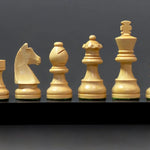
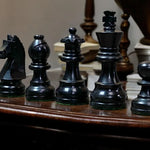
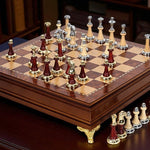
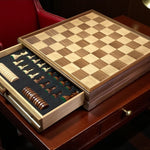
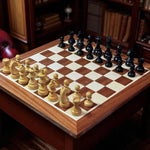
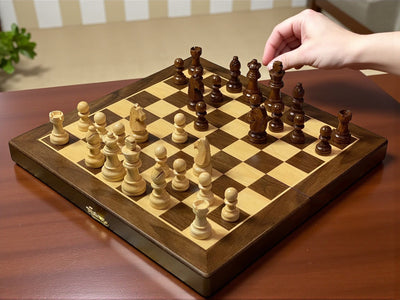
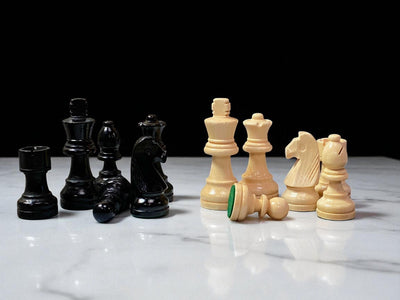
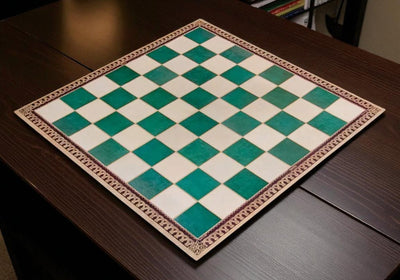
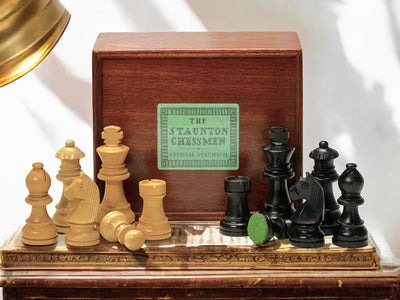
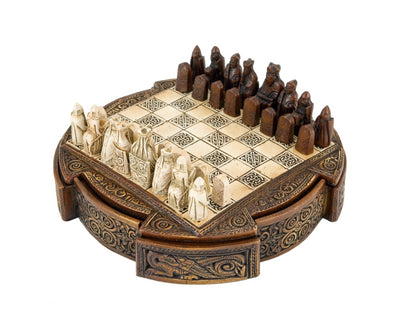
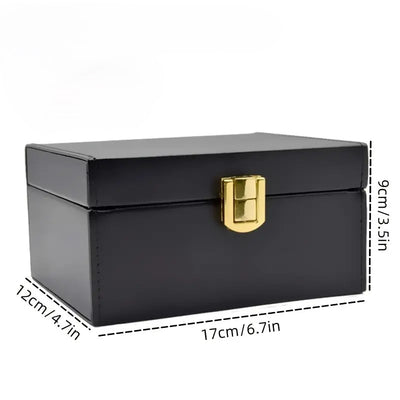
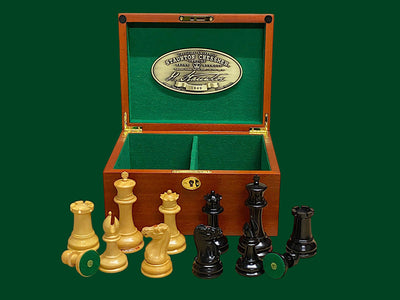
Leave a comment